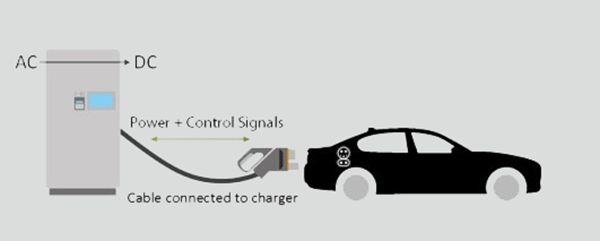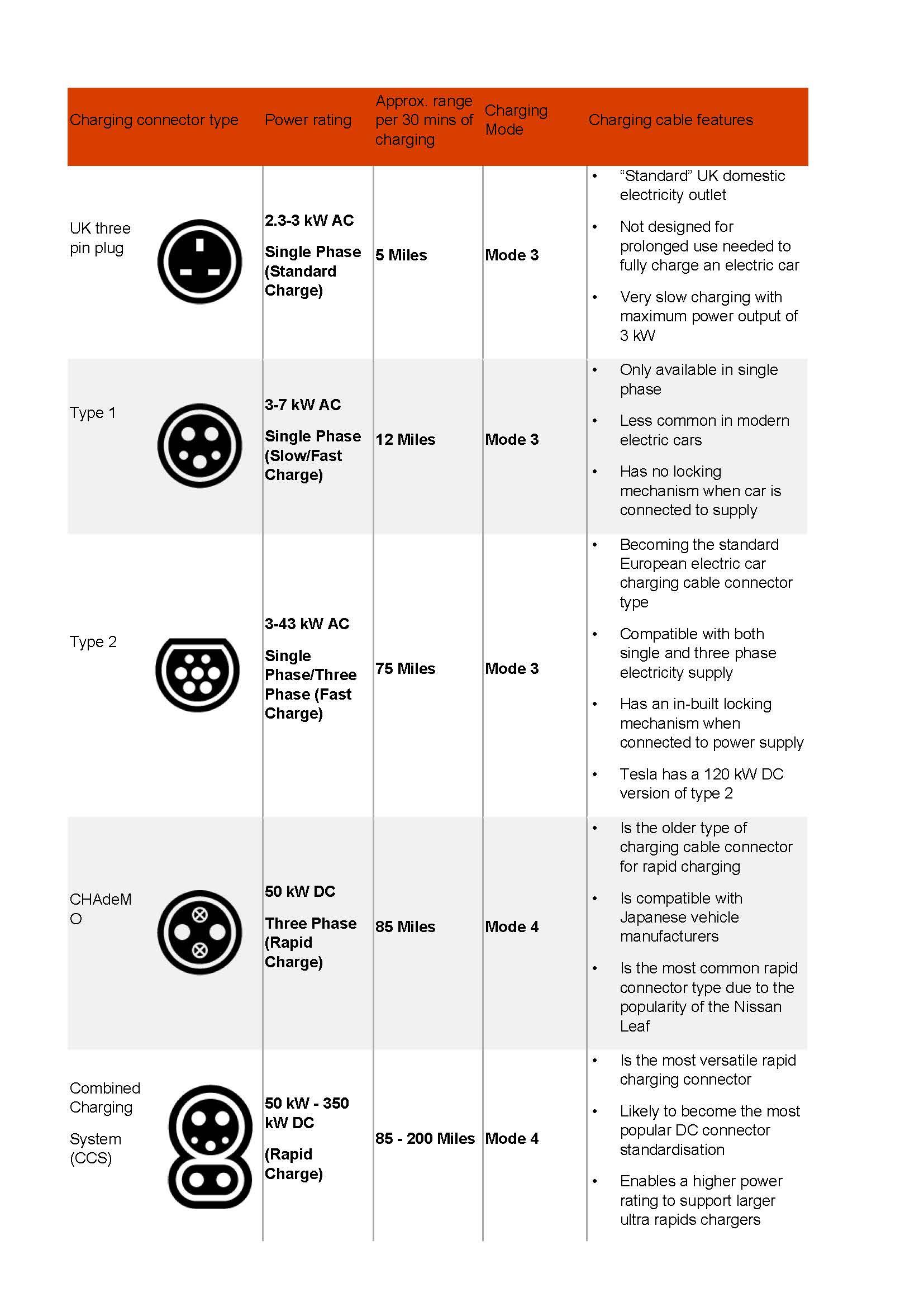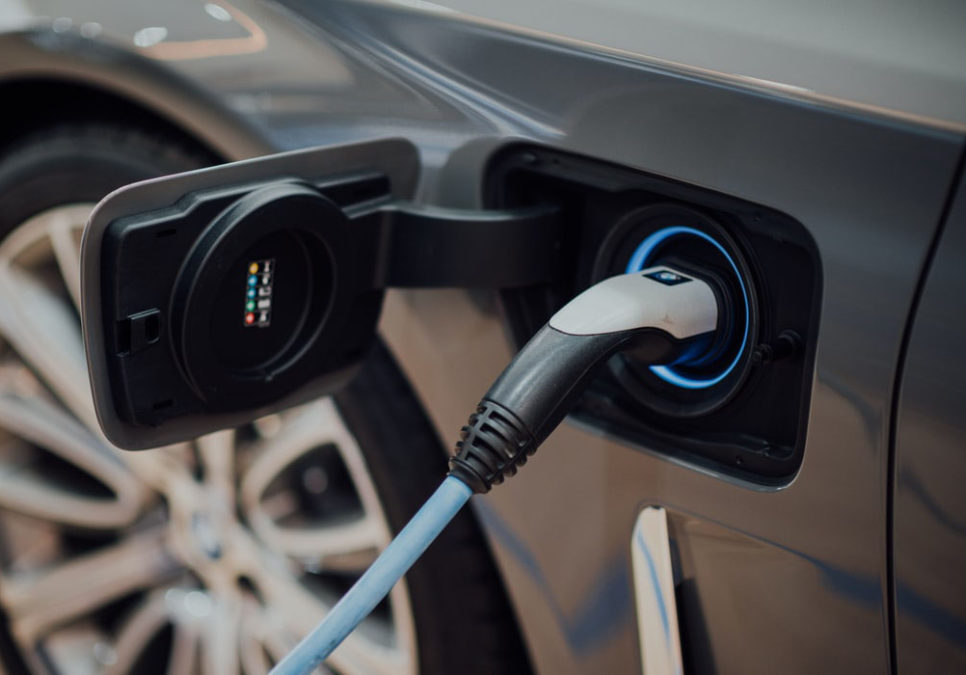Electronic Vehicle Charging in the UK
By Declan Hunt, Electrical Engineer
With electric vehicles becoming increasingly popular within the UK, an increase in Electric Vehicle (EV) Chargers is needed. At present there is no UK wide regulatory or legislative requirement for EV charging provisions, but several cities and local authorities have their own requirements.
The UK government is debating the use of planning regulations as part of its strategy to facilitate mass adoption of electric vehicles in the UK, with a long-term objective is to ensure an EV charger is installed in every home with parking by 2040. Although the government may make some direct investments to seed the market and address any ongoing or potential areas of market failure, the government’s view is that most charging infrastructure will be privately funded.
Having recently installed EV charging stations at one of our projects, we looked at the types and modes of chargers available and the considerations for installation.

London Plan
The leading local policy regarding the inclusion of EV chargers in new developments is the London Plan, from which other regional and local planning documents are often taking their lead.
The London Plan acts as the overarching planning guidance for the 32 individual London Boroughs. Since 2011 the London Plan has provided a definition of “active” and “passive” provision of chargers in different development types.
- “Active” – A physical socket connected to the electrical supply, into which vehicle owners can plug their vehicle.
- “Passive” – The network of cables and power supply necessary so that at a future date a socket can be added easily.
The London Plan requires any developments or major refurbishments that require planning to provide the following:

‘Types’ and ‘Modes’ of EV Chargers
At present, there are a number of different EV chargers on the market. EV Chargers are defined by their ‘Type’ and ‘Mode’ of operation. To design a compliant installation, an understanding is required of both of these terms.
Modes of EV Chargers
A ‘Mode’ of EV charger defines how the complete charging system functions, how it is served within the building and the level of protection that is present within the installation.

Mode 1: Household socket and extension cord
The vehicle is connected to the power grid through a standard socket present in residences allowing a maximum delivery of power of 11A. This is no longer regarded as safe as the constant high draw from the charger over several hours will increase wear on the socket and increase the likelihood of fire.

Mode 2: Household socket with cable-incorporated protection device
The vehicle is connected to the main power grid via household socket-outlets. Charging is done via a single-phase or three-phase network and installation of an earthing cable. A protection device is built into the cable. This solution is more expensive than Mode 1 due to the specificity of the cable, however, it still does not meet the latest safety standards.

Mode 3: Fixed, dedicated circuit-socket
The vehicle is connected directly to the electrical network via a specific socket, which is fed by a dedicated circuit. A control and protection function is also fitted permanently in the installation. This is the only charging mode that meets the applicable standards regulating electrical installations.

Mode 4: DC Connection
The electric vehicle is connected to the main power grid through an external charger. Control and protection functions and the vehicle charging cable are installed permanently in the installation. AC-DC conversion happens within the charger installation as opposed to using the in-built car inverter.
Types of EV Chargers
The type of charger is mostly related to the point of connection and the shape of the connector. Currently there is a range of charging connector types in use within the UK. The most common are:

Cost of Installing EV Chargers
When it comes to the cost of installing commercial EV chargers, every install is different, but as a rule of thumb when budgeting for an EV charger we should allow for:
- ~£1,000 to £4,000 for an installed 7kW EV charger.
- ~£20,000 to £40,000 for a straightforward installed 50kW charger.
- Any electrical upgrades, major groundworks, signage etc. as these will increase these costs.
Installation costs vary depending on:
- The power required for the EV chargers.
- How the chargers are to be installed (e.g. wall mounting is cheaper than concreting in bases).
- The distance between the chargers and the connection point.
- How the supply cable is to be fixed enroute to the chargers (e.g. trenching through hardstanding to bury cable is much more expensive than clipping to a wall).
- Control requirements of the EV charger (e.g. payment systems, restricted access, etc.).
Site Considerations
In order to select the correct charger, it is important to understand the area and site in which the EV chargers will be installed.
Charging Times
Depending on the designed mode and type of the EV charger, the charger will have a corresponding maximum output power. The higher the output power, the faster the electric vehicle will be able to charge. EV chargers are also categorised based on their average charging time. Generally charging stations are put into three categories:
- Standard/Slow Chargers – Single Phase 3kW – 8 hour chargers.
- Fast Chargers – Single Phase 7kW – 3 hour chargers.
- Rapid Chargers – Multiphase 48kW (DC) – 30 minute chargers.
Standard chargers are defined as being suitable for parking areas where cars are likely to be left overnight or during the daytime – e.g. residential, places of work.
Fast chargers are defined as being suited to parking areas where less time will be spent – e.g. retail carparks.
Rapid chargers are suited to parking areas where as user will want to spend as little time at the charger as possible – e.g. Motorway service stations.
There is currently no defined power required for the different types of buildings.
Control and Operation of EV Chargers
It is important to not only consider the type and power requirements of the charger but also how each charger is used onsite.
Depending on the type of site, e.g. home, workplace, shopping centres or motorway service station, the operational requirement of the charger will change. Questions to consider are:
- Will the user be required to pay for the use of the EV charger? If so, what payment system is required? – Integrated card reader, online smart phone applications, etc.
- Is there a requirement for restricted access of the EV chargers? How will EV charger be restricted i.e. via User registration systems?
- How will the charger be mounted? This can be pole mounted or wall mounted.
- Will the charger need to be integrated with a battery, photovoltaic panels or other similar systems?
- Is there a requirement for advertising displayed on the EV charger?
- How resilient should the EV charger be to outside forces? Weather proofing and vandal proofing should be considered.
- Does the site have a limited power capacity to serve the EV chargers? Active load management may be required to avoid breaching grid import limit
- Is there a requirement for the installation of more EV chargers in the future?

Source: Unsplash
Integrated Systems and Future Technology
Technology is constantly changing and improving, and consideration should be given to new trends in the market. A few examples of integrating EV charging with other technology and potential future technology are:
Home Generation Integration
Home Charger can be integrated with home generation (e.g. Photovoltaic panels). This allows system to “divert and match” the energy produced by the generator to the EV charger.
Energy Storage
To avoid upgrading local network infrastructure due to capacity limits, an alternative can be to install an EV charger with energy storage (or off-peak charging with monitoring).
The requirement for a load management system to monitor incoming supply, battery system, car charger and renewable generation (i.e. PV panels).
- This usually requires systems to be from same manufacturer (i.e. commercial – Tesla, domestic – Rolec, etc.).
- Can combine systems from different manufacturers if capacity is not limited and load management is not required.
Allows reduced costs by avoiding peak-tariff periods and generally reduced consumption from grid by onsite generation.
Vehicle to Grid (V2G) system
Uses bi-directional inverters to allow the electric vehicle internal battery to provide power to homes and businesses.
Developing technology. Requires new electric vehicle with V2G capability.
Inductive Charging Systems
Inductive or wireless charging uses an electromagnetic field to transfer energy between an electric car and a charging pad through electromagnetic induction, negating the need for charging cables.
The first cars with inductive charging capabilities are expected to be introduced in the near future.
OR Consulting have designed, and are currently installing EV chargers for a range of projects. Our project at the Haveli at Bhaktividanta Manor is a recently completed example of EV chargers incorporated into our design.
